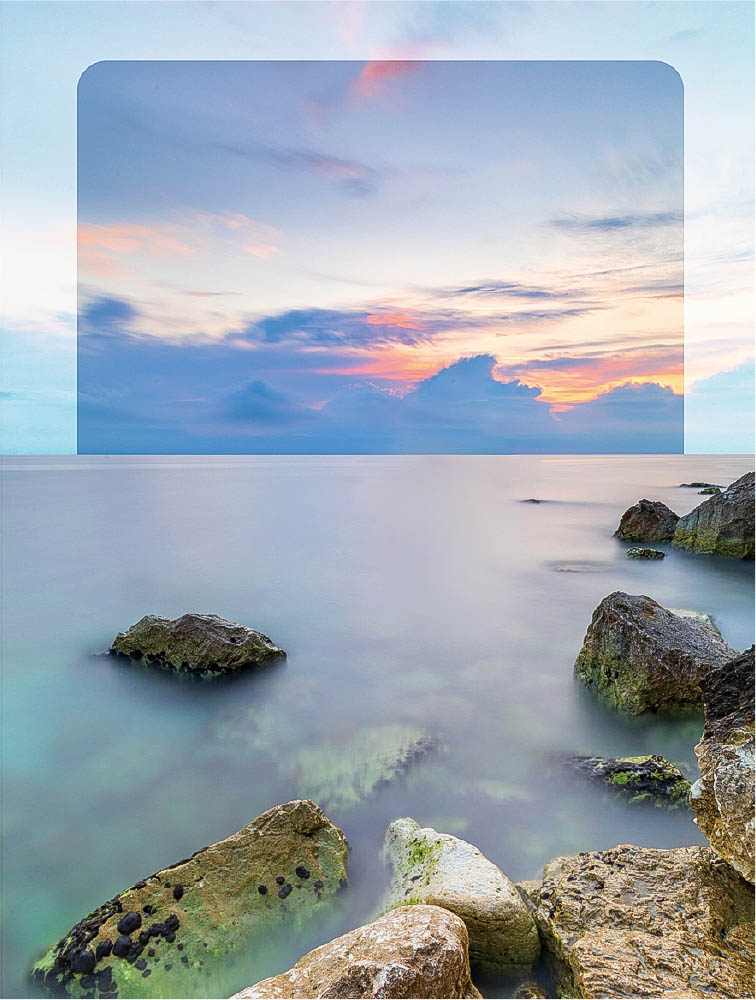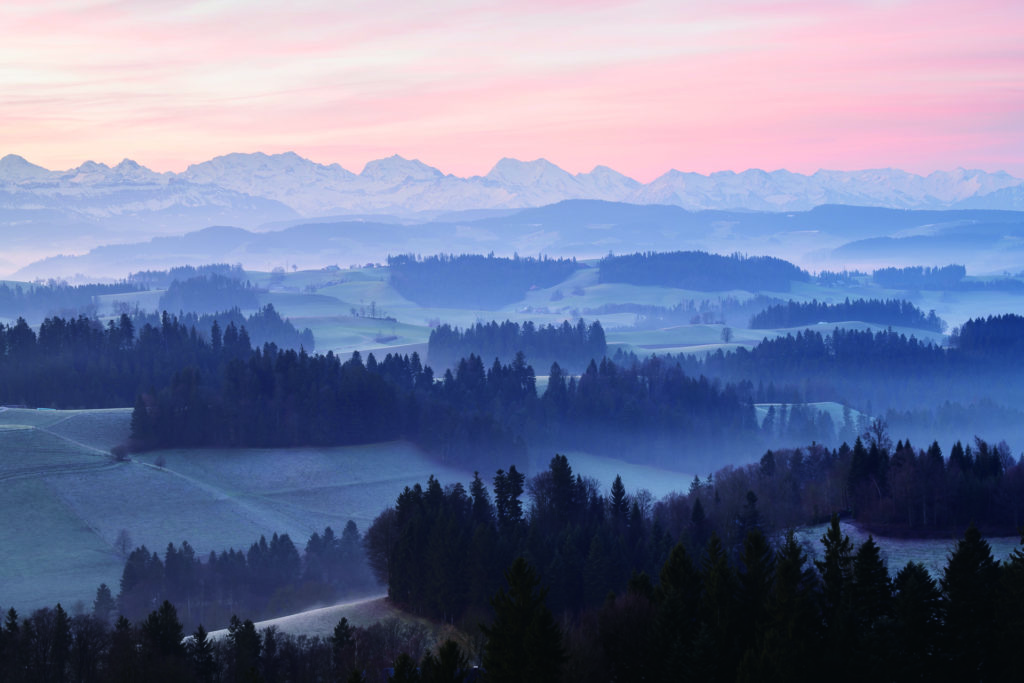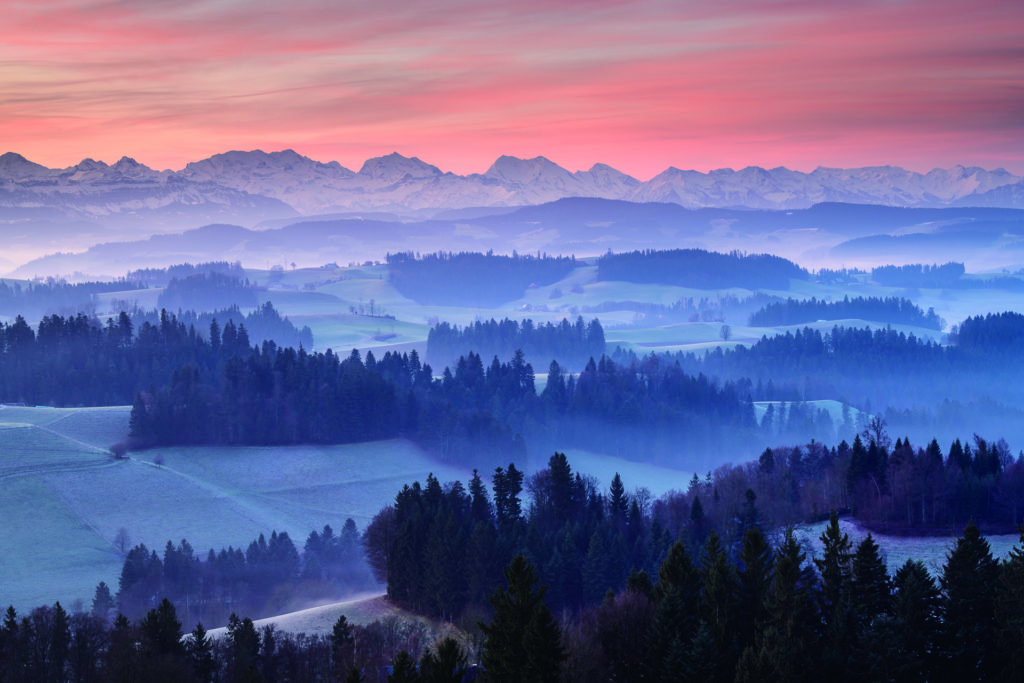Different types of graduated neutral density filters are suitable for different purposes and shooting conditions. Within the NiSi product range our graduated ND filters come as either soft, medium, reverse or hard graduated variations. The gradient transitions from top to middle of each of these types of filters varies greatly, as does the way the transition ends in the middle of the filter.
Not only does each of the types of gradient transitions vary, but each different type of filter also comes in varying densities of 2 stop (0.6), 3 stop (0.9) and 4 stop (1.2) graduations. When using a graduated ND filter of any type, a meter reading should be done for both the foreground, and what is typically a brighter sky to calculate the exact density of filter that is required to bring those elements within one stop of each other. Understanding how the scene is composed, and what you want to achieve in terms of overall contrast and exposure balance will than make a difference in what type of graduated ND filter you choose.
Let’s take a look at when to use a hard graduated neutral density filter and what to look for when using it. Check out our Tips for selecting and using NiSi graduated neutral density filters article for more tips on selecting and using graduated neutral density filters.

Use a Hard Graduated Neutral Density Filter when the horizon line is flat and obvious
Hard graduated neutral density filters have a very sudden and straight edge that defines the start of the gradient in the centre of the filter. Hard graduated ND filters also have less of a noticeable gradient or variation in density from the top to the middle of the filter when compared to a soft or medium grad. Due to the very defined and darker edge across the middle of the filter, hard graduated ND’s are suitable for when there is a straight horizon line. They are also best use when no other larger elements such as mountains, buildings or rocks protrude above the horizon. If there are any elements above the horizon the exposure of those areas of the image will be noticeable and quite possibly very difficult to correct during post processing.
When you are lining up a hard graduated filter, it is extremely important that you ensure the horizon line is positioned perfectly with the hard edge of the graduation. As the middle of a hard graduated ND is noticeably darker than a soft grad or medium grad, it is much more likely that incorrect positioning of the filter will impact on portions above of below the horizon if not lined up perfectly.


When using a hard graduated neutral density filter the focal length matters
Due to the fact hard graduated ND filters have a much more noticeable density in the middle of the filter and less of a gradient transition, the selection of your lens and focal length will also play a big part on whether you should use them or not. The wider the lens, the more likelihood that it will naturally introduce distortion into your images. To put it simply, distortion is when lines of an image that should be straight appear curved. There are two types of distortion – barrel distortion which makes lines appear as if they curve outwards – and pincushion distortion where lines appear to bend inwards.
Ultra wide angle lenses generally always cause some form of distortion, and this can quite often be very noticeable on the horizon lines of images. Distortion can be corrected in post processing, but if a hard graduated ND filter is being used, and the horizon is not actually appearing straight when an image is captured, the horizontal line of the filter may not line up with the actual horizon as you see it through the camera once the shutter button is pressed. This would be very hard to correct in post processing as there will be a noticeably darker line caused by the filter appearing where there isn’t a straight line of a horizon.
In the case of using ultra wide angle lenses (20mm and wider in a lot of cases), a soft or medium graduated neutral density filter may be the better choice. From 20mm and up to 50mm, most lenses will not have too much visible distortion, and in this case when there is a noticeable straight horizon line as mentioned above, a hard graduated neutral density filter may be the right choice.

